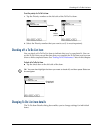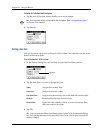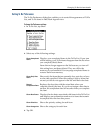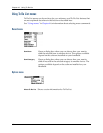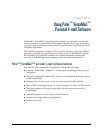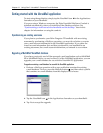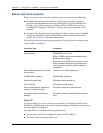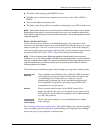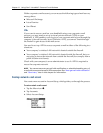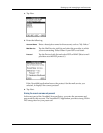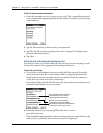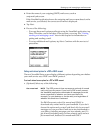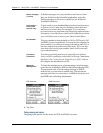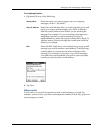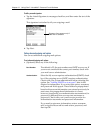
Setting up and managing e-mail accounts
181
■ The name of the outgoing mail (SMTP) server
■ Whether your e-mail account requires any security, such as SSL, APOP, or
ESMTP
■ Your e-mail address and password
■ The login script (if any) that you need for connecting to your ISP or mail server
NOTE Information about your e-mail account is available from the e-mail provider.
Depending on the type of e-mail service you have, you may be able to access this
information by going to the e-mail provider’s web site or by contacting the provider’s
customer support.
Using a corporate e-mail account
If you want to access e-mail on your handheld using your corporate e-mail
account, you create this account on your handheld in exactly the same way as any
other account (see “Network e-mail account prerequisites” later in this chapter),
with one exception: for a corporate e-mail account, you may need to set up a virtual
private network (VPN). See “VPNs” later in this chapter for information.
NOTE If your company has a Bluetooth network located behind the corporate
firewall, or if you are using an 802.11b SDIO card, sold separately, in your handheld
and your company has an 802.11b network located behind the corporate firewall, you
may not need to set up a VPN to access your corporate e-mail account. See the
following section for details.
The following considerations apply when setting up a corporate e-mail account:
See “Creating a network e-mail account” later in this chapter for steps for inputting
your username, password, protocol, and incoming and outgoing server settings
when you set up your corporate e-mail account.
Username and
password
These might be your Windows NT or Windows 2000 username
and password, your Lotus Notes ID username and password,
or something else. Check with your company’s server
administrator to obtain the correct username and password.
The VersaMail 2.5 application provides strong 128-bit AES
encryption for your password.
Protocol
Most corporate mail servers use the IMAP protocol for
retrieving mail. In rare cases, your company server may use the
POP protocol. Check with your company’s server administrator
to verify the protocol.
Incoming and
outgoing mail
server settings
Check with your company’s server administrator to obtain
these settings.



